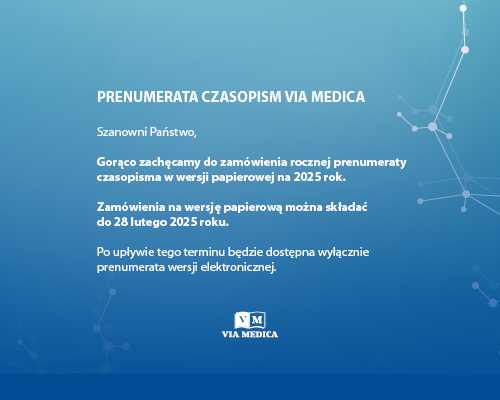Tom 12, Nr 6 (2017)
Opis przypadku
Opublikowany online: 2017-12-29
Wyświetlenia strony
1169
Wyświetlenia/pobrania artykułu
743
Pacjent w ACS STEMI i lekarz w systemie na telefon — opis przypadku
DOI: 10.5603/FC.2017.0111
Folia Cardiologica 2017;12(6):592-596.
Streszczenie
Państwowe Ratownictwo Medyczne powołano w celu ratowania ludzkiego zdrowia i życia. Bez względu na zastosowane rozwiązania systemowe wszystkie kraje kierują się takim założeniem. W Polsce ustawą, która weszła w życie w 2007 roku stworzono dwa rodzaje zespołów wyjazdowych — z lekarzem (zespół „S”) oraz złożony z samych ratowników medycznych (zespół „P”). Do wszystkich stanów zagrożenia życia powinien być wysłany zespół „S, zaś do pozostałych zespół „P”. Warto zauważyć, że w niektórych krajach istnieją tylko zespoły podstawowe, natomiast ich możliwości działania i farmakoterapii są podyktowane regulacjami prawnymi funkcjonującymi w danym kraju. W innych systemach w Europie zespół podstawowy może liczyć na wsparcie lekarza, który dojeżdża na miejsce zdarzenia.
W opisanym przypadku pacjent z zawałem serca (STEMI, zawałem serca z uniesieniem odcinka ST) powikłanym obrzękiem płuc początkowo był zaopatrywany przez zespół podstawowy. Ze względu na ciężki stan chorego oraz ograniczone możliwości działania poproszono o wsparcie lekarza. Opisany przypadek ukazuje możliwe do zastosowania (nie tylko w Polsce) rozwiązanie, by zrezygnować ze stałych zespołów specjalistycznych oraz proponuje inne rozwiązania zwiększające skuteczność w działaniach zespołów ratownictwa medycznego.
Słowa kluczowe: STEMIratownictwo medcznepostępowanie przedszpitalne
Referencje
- Act on PRM. Dz. U. 2006 (Journal of Laws), No. 191, item. 1410.
- Gaszyński, W. “S” and “P” mean: ambulances In a new way. Anesthesiology Rescue Medicine. 2007; 2: 65–69.
- von Vopelius-Feldt J, Benger J. Who does what in prehospital critical care? An analysis of competencies of paramedics, critical care paramedics and prehospital physicians. Emerg Med J. 2014; 31(12): 1009–1013.
- Roessler M, Zuzan O. EMS systems in Germany. Resuscitation. 2006; 68(1): 45–49.
- Wilson M, Habig K, Wright C, et al. Pre-hospital emergency medicine. Lancet. 2015; 386(10012): 2526–2534.
- Dudek D, Legutko J, Siudak Z, et al. [Interventional cardiology in Poland in the year 2012. Summary report of the Association of Cardiovascular Interventions of the Polish Cardiac Society]. Kardiol Pol. 2013; 71(11): 1213–1219.
- Stachowiak P, Wójcik G, Kazimierczak A, et al. Comparison of transport methods for patients with ST-elevation myocardial infarction to a percutaneous coronary intervention center and determination of factors influencing long-term mortality. Int J Cardiol. 2016; 214: 537.
- Raport NIK (Supreme Audit Office Report) „Funkcjonowanie systemu ratownictwa medycznego” ID number 149/2012/P11094/KZD.
- Wójcik G.; Approach and Effectivity In Acute Coronary Syndrome segment elevation ST – ACS STEMI In paramedical practice In area of Szczecin city In 2009-2011; doctoral dissertation, Pomeranian Medical University in Szczecin, Szczecin 2014, unpublished manuscript.





